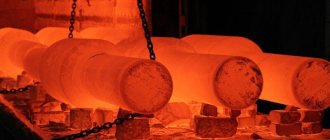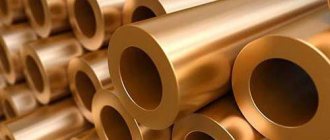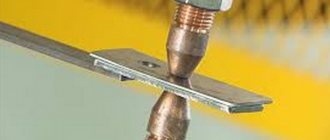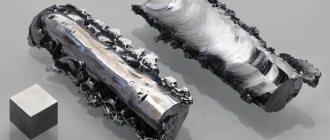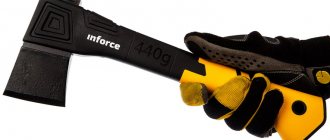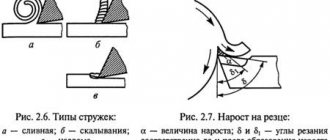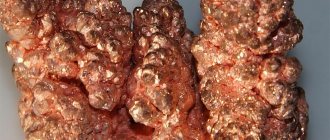No material, including steel, can last forever. It must be protected from moisture, sunlight and low temperatures. Oxidation of a metal creates a thin protective film on its surface that prevents oxygen from the air and water from destroying the material. At the same time, the technical characteristics of steels, aluminum and its alloys change.
From a chemical point of view, oxidation is the oxidation reaction of a metal and the formation on the surface of a thin layer of crystals bound by oxygen and other substances. The technology for applying a protective coating has several types of varying complexity. The simplest one was used several centuries ago and is available to anyone who wants to cover a part with a protective film at home. Complex technology requires special equipment and is carried out only in production conditions.
The essence and purpose of the technology
At its core, steel oxidation is a redox reaction of the metal when it interacts with atmospheric oxygen, an electrolyte or special acid-base solutions. As a result, a protective film is formed on the surface of the part, increasing the technical characteristics of the metal:
- increases hardness;
- reduces the formation of scuffing;
- increases the ability of parts to run in;
- increases service life;
- creates a decorative coating.
Adding coloring solutions to the electrolyte allows you to create metal products with surfaces of different colors.
Oxide film coating is used for various materials. In the jewelry industry and when creating costume jewelry, oxidation of many metals is used:
- silver;
- aluminum;
- copper;
- titanium;
- brass;
- bronze
The essence of the treatment is to increase strength and add additional decorativeness. Silver items hold their shape well. This allows you to create jewelry with sharp corners and subtle patterns. With the help of oxides, a patina that imitates antiquity and other effects are created.
Depending on the characteristics and properties of the metal, various technologies are used to create complex oxides on the surface.
The positive qualities of oxidation include its distribution over the surface with a thin film of several microns - thousandths of a millimeter. At the same time, the dimensions of the parts and seats on top and on the surface do not change.
Technological features and stages of painting aluminum
Aluminum has many useful properties - it does not rust, does not require special care, and is easily transported from place to place due to the low weight of the material. However, this metal also has disadvantages that reduce its versatility. The main disadvantage is that water-based paints do not adhere well to aluminum, which complicates its painting using conventional methods. But how to paint aluminum without the paint cracking? Is it true that aluminum can only be painted with powder paints? What precautions must be taken to ensure that painting aluminum does not harm the health of the painter? These issues will be discussed below.
Types of metal oxidation
The steel oxidation process has several varieties:
- microarc;
- hot;
- cold.
The microarc method refers to the method of applying an oxide film using an electrolysis installation. The part is placed in a bath of electrolyte. “+” DC is connected to it. There is a wire with “–” to the bathtub. When current passes, microfoci with high temperature and pressure are formed on the surface. As a result, oxidation occurs. Microarc oxidation is used to coat aluminum, silver and their alloys.
The process of hot oxidation of steel involves heating the part or the solution in which it is located to accelerate the formation of a film of complex oxides.
Cold technologies mainly include chemical coating and plasma methods, when the surface is saturated with oxygen under the influence of microcurrents or in a saturated salt solution.
Chemical
Chemical oxidation is carried out by immersing parts in various solutions.
Low temperature coating process is carried out at a temperature of 30–180 °C. The steel is immersed in a solution of alkalis or acids with the addition of manganese. Then, after removing it from the bath, they oil it - lubricate it with oil or immerse the part in it for a few seconds. Electrochemical coating with oxides is carried out at low temperatures – up to 100 °C. The electrolyte is a solution of several nitrates and chromates. The steel is coated black.
Food grade stainless steel contains many alloying substances, including chromium and manganese. It requires sophisticated equipment to cover. At home, it can be oxidized in a solution of sodium nitrate. The surface takes on a bright blue color.
Anode
Anodic oxidation of small parts can be done in a home workshop. To do this you need to have a battery or a current rectifier. The anode is connected to the part and a DC source. When steel is immersed in a weakly acidic electrolyte solution, electron movement occurs, and along with them, particles of salts and acids penetrate into the upper layer of the metal. As a result, iron crystals with complex oxides are formed. They gradually cover the entire surface of the part with a layer of several microns.
The speed of the process to form an oxide film of the required thickness can be adjusted by changing the current strength and increasing the temperature of the electrolyte. Anodizing affects the initial characteristics of steel and non-ferrous metals:
- changes color;
- increases strength;
- the film has low electrical conductivity;
- prevents the formation of simple iron oxides - corrosion.
Thermal
Anyone who watched the welding of parts or their heating in hot furnaces saw tarnished colors on the surface: from a yellow tint to a blue tone, turning into black.
They depend on the temperature to which the steel is heated at a particular point. The more the metal is heated, the more it is oxidized and the darker its color. It is enough to heat the surface to 300 ⁰C to carry out thermal oxidation. A thin film of yellow and light brown oxides will appear on the steel. The higher the content of alloying substances, the more the steel must be heated.
Heating is often used to promote more active chemical and anodic oxidation of steel. A metal placed in a hot solution of sodium nitrate or a mixture of acids reacts faster.
Plasma
Cold oxidation method - plasma coating of parts. Oxidation occurs at low temperature. The part is placed in plasma, which is created by RF or microwave currents, similar to a microwave oven. The chamber has a high oxygen content.
Plasma oxidation is used mainly to increase the photosensitivity and electrical conductivity of parts of optical devices and circuit boards.
Laser
It is possible to oxidize a part using a laser only in an industrial enterprise.
The part is placed on a table or clamped in a chuck, a program is entered, and the laser heats narrow strips one next to the other over the entire surface. The best option is to use CNC machines. The disadvantage of laser oxidation of steels is that the workpieces are coated only on the outside. The laser head will not fit into small diameter holes.
DIY oxidation
The easiest way to make a protective coating at home is according to an old recipe. To do this, the steel object should be cleaned of all types of contaminants and pickled in a weak acid solution. Any remaining stain will hinder the oxidation process of the steel.
- Heat the structural steel to 300 ⁰C. Alloy and carbon steels require higher temperatures. The more alloying elements, the stronger the heat should be.
- Dip the hot piece into linseed oil for 8–18 minutes.
- To obtain a dense layer that reliably protects the steel from rust and create an insulating layer, the procedure should be repeated 4–6 times.
When heated to temperatures above 300 ⁰C, hardened steels can be tempered and become softer. Therefore, after hardening, the metal is heated with an inductor using high-frequency currents up to 250–280 ⁰C. If it is not possible to heat only the surface of the workpiece, the temperature is reduced to 220–250 °C, increasing the number of heating and immersions.
Flaxseed oil has been used in past centuries. Now it can be replaced by a spindle, widely used for hardening steel.
Oxidation of steel is an interesting process. With its help, you can independently protect small products, fasteners in cars and other devices from corrosion.
Which method did our readers like best and what are they ready to put into practice? We are interested in your opinion.
Ductile metal: thin films of Al₂O₃ behave like a liquid when stretched
Liquid-like superplasticity of an aluminum oxide layer at room temperature (video).
Sequential photographs under a transmission electron microscope (af) show the process of superextension and self-healing of the oxide when stretched in an environment with an oxygen partial pressure of 2 × 10 −6 Torr. The oxide is stretched between two white triangular marks. The green arrow in the first photo shows the direction of stretching. Image (g) is the filtered and enlarged area indicated by the orange rectangle in photo (b). The last image (h) shows the length of the oxides that are located between the two triangular markers in photo (a). Most metals, with the exception of gold, oxidize in air in the presence of water. Rust forms on the surface of iron, tarnish on the surface of silver, a greenish patina on the surface of copper or brass, etc. Over time, these natural chemical processes can weaken the metal, leading to cracks or structural failure.
But several special oxides are known, including chromium oxide, silicon oxide and aluminum oxide. These substances do not actually destroy, but protect
their metals/semi-metals. A thin layer of oxides forms on the surface of the material (chromium, silicon and aluminum), and oxidation does not proceed further.
Scientists have long suspected that the thin oxide film has unique properties. They weren't wrong.
This is a truly unique and very interesting property of these oxides, and it has long been of interest to scientists. After all, if we understand how and by what principles the formation of such films occurs, then they can be more effectively used as a protective coating, says a press release from the Massachusetts Institute of Technology. An Al2O3 film can ensure absolute tightness and not allow a single molecule to pass through.
But in this case, the scientists did not set out to develop some useful material, but simply wanted to see with their own eyes what unique properties these oxides exhibit. For the first time in the world, a video recording of the behavior of an Al2O3 film on an aluminum surface was made.
For the filming, a standard transmission electron microscope (TEM) was modified to image the surface in the presence of arbitrary gases and liquids, and focused on the tips of the thinnest aluminum needles, welded by cold welding, that is, pressure with plastic deformation of the surfaces being connected.
After welding, the needles were placed in an aggressive oxygen environment and began to be stretched to the sides. Thus, the material was simultaneously subjected to tension and oxidation - this is called "stress corrosion", and under such conditions it is especially interesting to look at crack formation. Illustration of the deformation of aluminum oxide during tension in an aggressive environment.
As it turned out, aluminum oxide actually deforms like a liquid, exhibiting superplasticity.
The protective oxide coating elongates as the metal itself elongates. At an average stretching rate, the oxide does not form any cracks. The video below is recorded at a higher rate of stress corrosion where the oxide exhibits "self-healing" properties, filling in the damage. A thin layer of oxide separates the oxygen (right) from the aluminum grains (left).
As the material is stretched, the oxide layer elongates "Unlike the traditional process of thin film growth or nanoglass consolidation, we observe seamless accretion of new oxide islands without the formation of any glass-to-glass junctions or surface grooves, indicating significantly accelerated glass kinetics on the surface along compared with the rest,” the scientists note.
Aluminum oxide exhibits these unique properties even at room temperature if its film is thin enough (2-3 nanometers). The film can stretch more than twice. Technically, this material is glass, but exhibits the properties of a liquid.
Source

